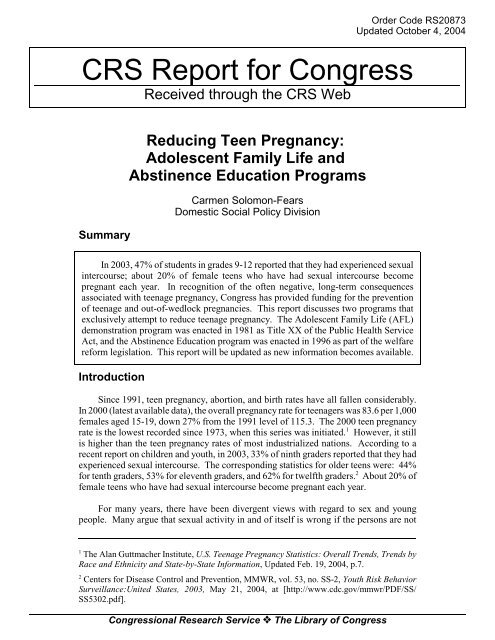
Teen Pregnancy: A Comprehensive Report
Introduction
Teen pregnancy remains a significant public health concern in the United States, with far-reaching implications for both the young mothers and their children. This report aims to provide a comprehensive overview of teen pregnancy, exploring its causes, consequences, and potential solutions. By examining the latest research and data, we hope to shed light on this complex issue and inform evidence-based policy and intervention strategies.
Prevalence and Trends
According to the Centers for Disease Control and Prevention (CDC), the teen birth rate in the United States has declined significantly over the past few decades. In 2020, the birth rate among 15-19-year-olds was 18.8 per 1,000, down from 26.5 in 2010. However, disparities persist across racial and socioeconomic lines, with higher rates among Black and Hispanic teens compared to their White counterparts.
Causes and Risk Factors
The causes of teen pregnancy are multifaceted and include both individual and societal factors. Individual risk factors include:
- Early onset of sexual activity
- Lack of knowledge about contraception
- Substance use
- Mental health issues
Societal factors that contribute to teen pregnancy include:
- Poverty and economic inequality
- Lack of access to quality education and healthcare
- Cultural norms and expectations
- Peer pressure
Consequences for Teen Mothers
Teen pregnancy can have profound consequences for the young mothers, both in the short and long term. Short-term consequences include:
- Increased risk of pregnancy complications and premature birth
- Higher rates of postpartum depression and anxiety
- Disruption of education and career goals
Long-term consequences include:
- Lower educational attainment
- Reduced economic opportunities
- Increased risk of chronic health conditions
- Higher rates of poverty and welfare dependency
Consequences for Children of Teen Mothers
Children born to teen mothers also face significant challenges. They are more likely to:
- Be born prematurely or with low birth weight
- Have developmental delays
- Experience poverty and food insecurity
- Engage in risky behaviors, such as early sexual activity and substance use
Prevention and Intervention Strategies
Preventing teen pregnancy requires a comprehensive approach that addresses both individual and societal factors. Effective prevention strategies include:
- Comprehensive sex education that provides accurate information about contraception and healthy relationships
- Access to affordable and confidential contraception
- Support for young people who are struggling with mental health issues or substance use
- Economic empowerment and educational opportunities for young women
Intervention strategies for teen mothers focus on providing support and resources to help them achieve their goals. These strategies include:
- Prenatal care and support services
- Case management and home visitation programs
- Educational and vocational training
- Housing assistance and financial support
Policy Recommendations
To address the issue of teen pregnancy effectively, policymakers should consider the following recommendations:
- Increase funding for comprehensive sex education programs
- Expand access to affordable contraception
- Provide support for young people struggling with mental health issues or substance use
- Invest in economic empowerment and educational opportunities for young women
- Implement policies that reduce poverty and inequality
Conclusion
Teen pregnancy remains a complex and challenging issue with far-reaching consequences for both the young mothers and their children. By understanding the causes and consequences of teen pregnancy, we can develop evidence-based prevention and intervention strategies that empower young people to make healthy choices and achieve their full potential. Addressing the issue of teen pregnancy requires a collaborative effort from policymakers, healthcare providers, educators, and community organizations to create a supportive environment that fosters the health and well-being of our youth.